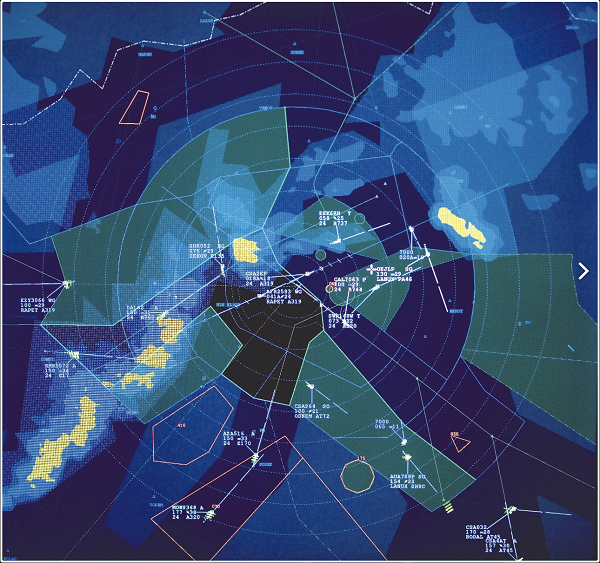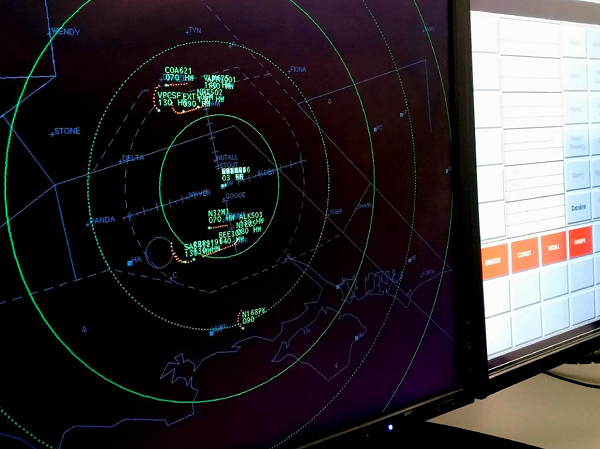Airspace Q2 2019 – A robust roadmap for India
The enormous surge in air traffic in India is a challenge that the national ANSP, Airports Authority of India, is welcoming with open arms.

According to the International Air Transport Association, India will become the third largest aviation market in 2024 and by 2037 will welcome 572 million travellers annually, 414 million more than today.
Similarly, Airports Council International (ACI) Asia-Pacific lists six Indian airports in its top 10 of fast-growing airports in the sub region. Delhi, Bengaluru and Mumbai are ranked first, second and third respectively.
“India is developing into a major aviation hub in the region, especially with growing routes between the Middle East and Asia,” says Jeff Poole, CANSO’s Director General.
“Air traffic management is playing an important role in enabling greater connectivity and realising the social and economic benefits of aviation for India.”
Creating a roadmap
Such strong growth brings equally robust challenges in handling the increased demand. To cope, Airports Authority of India (AAI) has a multi-pronged strategy in place to upgrade infrastructure, procedures, training and research and development.
Part of the work is addressing existing shortfalls identified following a November 2017 ICAO Universal Safety Oversight Audit. But once complete, India’s Directorate General of Civil Aviation (DGCA) believes the work will increase India’s audit score to 74%, significantly above the world average rating.
Furthermore, the Indian Government has empowered the DGCA to regulate air traffic controllers rather than AAI, which should help improve the audit score further.
But the bulk of the strategy is about preparing India’s 130 airports and 2.8 million square nautical miles of airspace for future growth. A key component is a deal AAI has signed with the US Trade and Development Agency (USTDA). Boeing will be the main technical partner, creating a 10-year ‘roadmap’ to enhance communications, expand existing systems and airspace capacity, and invest in navigation and surveillance/air traffic management.
“India recently celebrated 50 consecutive months of double-digit growth which is still continuing,” said AAI chairman Guruprasad Mohapatra at the signing of the deal. “This growth has brought with it the challenge of maintaining safe and efficient aircraft operations. Hence, it was decided to draw a robust roadmap for sustained ANS infrastructure to meet the growth challenges in a planned way.
“We have entered into a grant agreement with USTDA, under which Boeing will provide the technical knowhow to develop a future roadmap for smoother and more efficient skies.”
It is not the only agreement in place. AAI is also working with the Indian Institute of Technology (IIT), Madras to jointly research and improve air navigation systems. The IIT Madras experts will research potential mathematical, analytical, artificial intelligence and data mining solutions while AAI provides all-important air traffic data.
Part of the attractiveness of this Memorandum of Understanding is developing navigation equipment locally under the Make in India initiative, which would address import costs.
Mohapatra said: “It’s high time that we focused on developing excellence through innovation and the adoption of technologies to provide safe passenger and aircraft movement.”
Regional opportunities
The backbone of AAI’s work to handle air traffic demand is a futuristic telecommunications infrastructure (FTI).
There is a 15-year deal in place with Harris Corporation to work on FTI. The goals of the partnership are to upgrade network operations, enhance security, and improve the overall efficiency and quality of India’s ATM communications network while reducing telecommunications costs. The transition from voice to datalink should ensure uninterrupted communication with pilots across the entirety of India’s vast airspace.
“The futuristic telecommunications infrastructure provides a dedicated nationwide telecommunication network to support air traffic management operations, with an emphasis on safety and high reliability and the ability to expand for growth,” Mohapatra said.
FTI will play a vital role in the development of digital and remote ATC towers. AAI will soon benefit from one at Maharashtra Airport in Gujarat. The tower will be operated from Sardar Vallabhbhai Patel International Airport in Ahmedabad and is the first of its kind in India. The project includes a backup digital tower, also located in Ahmedabad.
Digital towers give India the opportunity to breathe new life into uneconomic, so-called ghost airports. Poole says the concept could be “transformative” in States like Gujarat and Andhra Pradesh where multiple small airports exist within a short distance of each other.
There are plans to revive 50 regional airports in the near future to boost connectivity between small cities. This is part of the as ude desh ka aam nagrik (UDAN, or Regional Connectivity Scheme) that caps airfares at an affordable level. Indian airlines are busy ordering aircraft to fly these regional routes. Vistara has narrowbodies on order worth US$3.1 billion while IndiGo and Jet Airways also have huge multi-billion-dollar orders.
It is reported that India is looking into the regulatory requirements for remote and digital towers although CANSO argues that no changes are necessary. It says that regulation should be based on performance. Therefore as remote towers fulfil the same performance requirements as conventional airport towers, performance indicators are the same and the regulatory oversight can remain unchanged.
“Increasing pressure to reduce costs while even enhancing their service offering forces air navigation service providers to re-think the status quo and to explore new concepts such as remote and digital towers,” said Mohapatra.
To further regional connectivity, eight mobile towers – which can quickly be constructed or taken down – have been acquired for use in Ambikapur, Bilaspur, Bokaro, Gujarat, Jagdalpur, Jeypore, Utkela and Vellore.
Jharkhand’s Bokaro is the first city to get one of the mobiles, which have been purchased under the regional connectivity scheme. Bokaro is home to an important steel plant so there is also a plan to rehabilitate the airport. The runway, taxiway and terminal will all benefit, and it is thought Patna, Kolkata and Delhi will be among the first destinations.
Finding a balance
More generally, India has introduced air traffic flow management (ATFM) to its skies. ATFM will help balance capacity against demand to achieve the optimum use of airport, airspace and aircraft at every Indian airport where there is a capacity constraint. This will reduce the complexities associated with the massive growth in air traffic being experienced in the country.
It is expected that ATFM will not only enhance safety but also save airlines approximately US$250 million per year in fuel costs and contribute to reducing greenhouse gas emissions.
ATFM will move AAI away from tactical adjustments to a more strategic and cooperative approach to managing system-wide resources and capacity. AAI should then be able to avoid much of the congestion and delays in the terminal and en-route airspace areas through collaborative decision-making (CDM) processes involving all stakeholders.
A supporting project will see Indian upper airspace harmonised with neighbouring airspace as much as possible. This is vital, given the constant east-west international traffic flow across Indian airspace. The work will reduce operational inconsistencies and differing rules and procedures, facilitate the flexible use of airspace and better utilise data.
Better surveillance
Other developments include ground-based augmentation systems (GBAS), automatic dependent surveillance – broadcast (ADS-B) and performance-based navigation (PBN).
GBAS is being driven by a desire to improve safety in the landing phase. It will provide a CAT-l landing minima alternative to an instrument landing system and is expected to support CAT-Ill operations in the foreseeable future.
Meanwhile, ADS-B has been successfully installed at 30 locations. But AAI is not stopping there. Surveillance could get a further boost as the air services provider is keen on deploying space-based ADS-B.
PBN is being implemented in accordance with ICAO’s Regional Implementation Plan. The initiative brings a host of advantages, including support for AAI’s flexible use of airspace plans, the enhancement of airspace capacity, and provision of optimised flight profiles. Most importantly, it makes Indian skies safer.
Hosting 500 million-plus passengers across 130 airports and nearly three million square nautical miles of airspace is an enormous task. But the work done and the work ahead ensure that India is destined to be a leading light in aviation.


